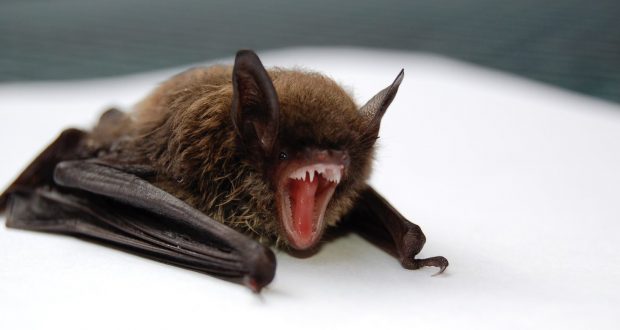Contracting Rabies is Almost Always Fatal and All Human or Pet Contact with Bats Should be Reported
The Los Angeles County Department of Public Health (Public Health) advises the public to never touch a bat with bare hands, and to report injured, sick, or dead bats. Summer and early-fall months are when rabid bats are most often found in Los Angeles County, especially during July, August, and September.
Healthy bats, which are good for the environment, typically hide and sleep during the day and emerge at dusk to fly and eat insects. Only about 1% of bats in nature have rabies, however, about 15% bats found near people and pets in LA County test positive for rabies. In 2022, 50 rabid bats were identified. So far this year, six rabid bats have been found, including three in Santa Clarita and one each in Altadena, Glendale and Los Angeles (zip code 90027).
Bats with rabies are more likely to fly in daylight, appear on the ground, or be found resting for long periods in highly visible areas, such as on the side of a wall. Bats with rabies may be found alive or dead and you cannot confirm if a bat has rabies just by looking at it.
Rabies is a fatal disease to humans and pets, including dogs and cats, if preventative medical treatment is not given before symptoms appear. Rabies is transmitted by the bite, or scratch from a tooth of a rabid animal. Many of our local bats have very small teeth. Bites from bats can be too shallow and small to be easily detected and can heal over quickly. Bats found inside of a house with any access to people sleeping, children, or pets may have bitten a person or pet without waking them or leaving a visible bite wound. After an exposure to rabies, a person must get urgent treatment to prevent illness.
Follow these simple steps if you encounter a bat:
- Never touch a bat with bare hands.
- Know that bats are protected wildlife, that they are beneficial for our environment, and that it is illegal for the public to kill, harm, or keep them. However, any bat that may have exposed a person or pet to rabies needs to be tested.
- Do not release a bat outside if it was found indoors or if it was handled with bare hands – cover it with a box and call animal control to request that it be tested for rabies. Any bat that may have bitten, or had contact with, a person or pet should be collected by animal control and tested by Public Health for rabies.
- If a bat is found outside that is sick, not moving, or dead, place a box or bucket over it. Then call the local animal control office to retrieve it for rabies testing.
- Seek rabies help quickly if you may have had an exposure. After a bat bite or bat encounter, call (213) 288-7060, or email vet@ph.lacounty.govto discuss the risk of rabies exposure. Office hours are Monday – Friday, 8 a.m. to 5 p.m. To report bites in Pasadena, call the Pasadena Humane Society (626) 792-7151. For Long Beach call Long Beach Animal Control at (562) 570-7387 and for Vernon call its health department at (323) 583-8811.
- Keep pets safe from rabies by keeping them up to date with their rabies vaccination. Indoor-only cats and dogs should be vaccinated against rabies, as some rabid bats are found indoors almost every year in Los Angeles County. Rabies vaccinations for pets are available at veterinary offices and low-cost veterinary programs throughout the county.
- Read and share our flyer on What To Do If You Find A Bat, available in English and Spanish: http://ph.lacounty.gov/vet/docs/WhatToDoIfYouFindABat_2021Outreach.pdf
For more information on bats and rabies visit: publichealth.lacounty.gov/vet/rabies.htm
 Westside Story Newspaper – Online The News of The Empire – Sharing the Quest for Excellence
Westside Story Newspaper – Online The News of The Empire – Sharing the Quest for Excellence





